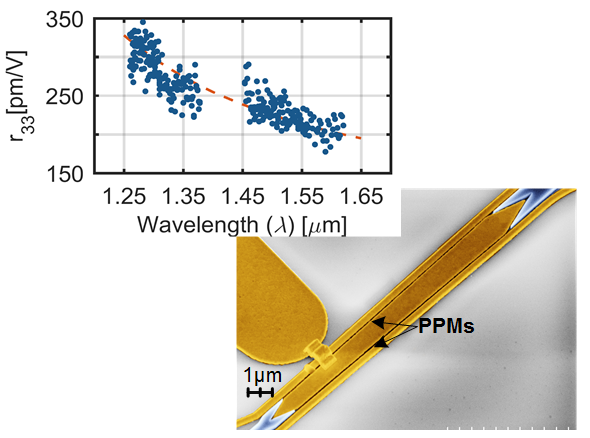Christian Haffner's article elected as "Editors' Pick"
The editors of the virtual feature issue "Organic and Polymeric Materials for Photonic Applications" elected the IEF article as “Editor’s Pick”. Their work showed that plasmonics allow to utilize a resonant enhancement to boost the performance of electro-optic modulators which cannot be utilized by photonic approaches.

Improving the electro-optic (EO) materials is crucial to achieve excellent performance of electro-optic modulators. Normally, a good material is considered to feature low optical losses (dB/mm) while providing large electro-optic (r33) coefficients. However, by moving from photonic to plasmonic modulator concepts this requirements changes as plasmonic modulators are typically only a few microns long compared to the mm long photonic devices. Thus, the requirement for lowest-loss EO-materials strongly relaxes from dB/mm to dB/mm and future material design can solely focus on maximizing the electro-optic coefficient. Following this approach, the group at IEF achieved record in-device electro-optic coefficients of 325 pm/V by utilizing the resonances of EO-materials while reducing the overall modulator losses despite using an EO-material with multiple times higher losses.
C. Haffner, W. Heni, D. Elder, Y. Fedoryshyn, N. Đorđević, D. Chelladurai, U. Koch, K. Portner, M. Burla, B. Robinson, L. Dalton, and J. Leuthold, "Harnessing nonlinearities near material absorption resonances for reducing losses in plasmonic modulators," Opt. Mater. Express 7, 2168-2181 (2017). external pagehttps://doi.org/10.1364/OME.7.002168call_made
